The future of the city, the city of the future
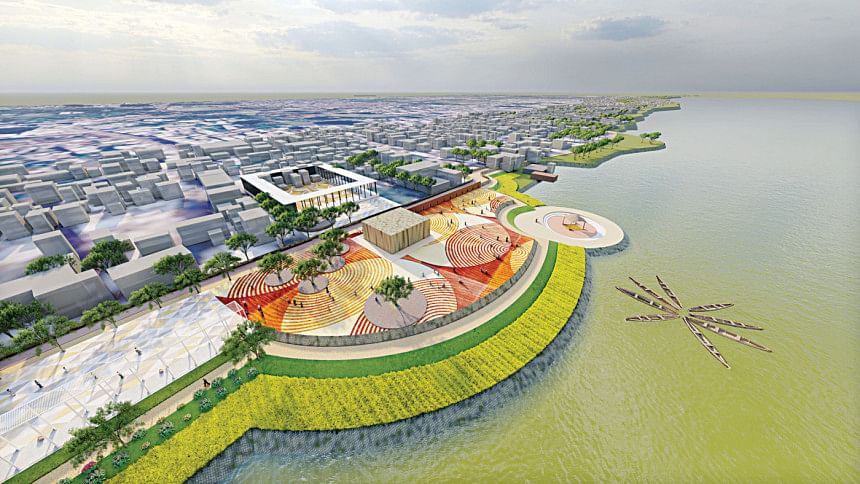
The city is perhaps the greatest innovation carried out by humans. Although nature has been used as an analogy in conceiving the fabric of the city, there is no such thing as the "city" in nature. Cities have always meant celebrating the virtues of sociality and proximity. With increasing complexity of the city, humans have developed newer forms of collectivity and association. When the internet—another epochal innovation—arrived, it seemed the very rationale of the city would be nullified. If one could be located anywhere and still be connected through the ether, what is the need for physical proximity as represented by the city. "This will kill that!", Victor Hugo wrote with concern in his famous novel The Hunchback of Notre Dame (1831, French), that the book as a device for expression will make unnecessary the role of architecture (such as the Cathedral of Notre Dame) as a tool of social and cultural expression. The cathedral is not to be seen as a singular work of architecture but the emblem of the whole city.
Yet, it seems the internet or the mobile phone has not made the city redundant. The need for human congregation, and the necessity for assembly and immediacy, which are the hallmarks of the city, are as intense as ever. In fact, we are at an historical turning point when more humans on earth live in cities.
As with any human innovation, from the city to the mobile phone, from the book to the internet, there is also a troubling side. While the city has led to new forms of collectivity and cooperation, and competition and innovation in the capitalist mode, the city has also bred detachment and squalor. We only have to recall the state of the European city in the 19th century. Writers bemoaned the conditions of Manchester, London and Paris of that time, expanding under the onslaught of industrialisation, as hellish and sordid. It was the critique of that city that led to modern planning around themes of health and well-being.
I make a distinction here between "urbanisation" and "urbanism." Urbanisation is basically a numerical enumeration and infrastructural understanding of the city, a vector of capitalist and industrialist forces. It's a poor and partial understanding of what the city offers. Urbanism, on the other hand, calls for an enthusiastic embrace of "cityness" with its humanistic physical fabric and social well-being, and a particular quality of life and living available only in the city. To develop an adequate narrative of the city, planners and policy-makers in Bangladesh need to think about urbanism.

The narrative of the city in Bangladesh is bound up with a number of ambivalences. On the one hand, we have always prided ourselves about our agricultural civilisation (consider Poet Jashim Uddin's epic lines about the Bengali village and the sentiment of "maya momotaey jorajori kori"), and, on the other hand, following the global trend, we are experiencing an exponential rise in the urban population of Bangladesh. Soon, Bangladesh will be a "country of towns." The 8th Five-Year Plan presents that growth as synonymous with economic development. The city, the document declares, "plays a central role in creating national wealth, enhancing social and economic development..." It is also noted that Dhaka city accounts for 35 percent of the GDP while its population is only 8.7 percent of the national figure. Bangladesh's notable economic growth is intimately tied to the outcomes of urban density: industrial agglomeration, cheap labour, and strategic entrepreneurship.
Bangladesh's Five-Year Plans record a fascinating change in direction from a rural focus to an urban one. In the First Five-Year Plan, a magnificent document for a war-torn nation, we find Bangabandhu's earnest plan for rural development through cooperative societies, group housing, and compact villages.
With the single-minded attention to "the city as an economic engine" in recent Five-Year Plans, the actual qualities of the city that make it liveable have been left mostly unattended. That is why Dhaka continues to be the least habitable city in the world in many global rankings. What we conclude from this is that with economists, industrialists and developers driving the discussion of the city in Bangladesh, we are yet to find our own urbanism.
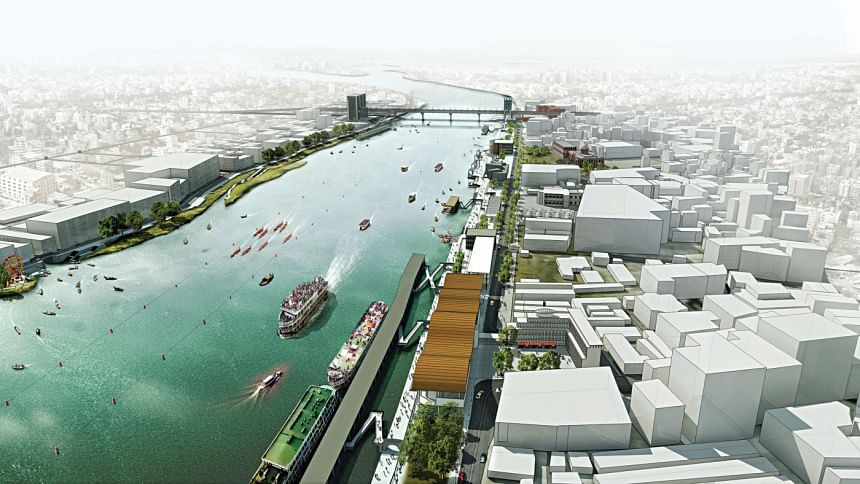
In the meantime, Prime Minister Sheikh Hasina's proposal of "Amar Gram, Amar Shohor" presents a new opportunity and challenge in urban thinking. On the one hand, the notion suggests bringing in new facilities and services available in cities but are lacking in the villages, but, on the other hand, raises conceptual questions about rearranging the very fabric of our villages. Who will take up this incredible challenge?
The Ministry of Local Government, which seems to be entrusted with taking the programme forward, has so far provided only some utilitarian services, such as roads, electricity, clean water, or taken it up literally in constructing mundane urban-style buildings with no comprehension of a larger fabric. It is not enough to provide engineering or utilitarian services to the villages, which perhaps should be done in any case, but far more critical is how the land, the waters, the homesteads, the commons, and new facilities are to be reorganised into a new physical and spatial fabric, into a newer balance between habitats and ecology. What should be the footprint of each settlement in this concept, where should the homesteads be, what should be the civic constituents, how should the settlements relate to agriculture and floodplains, and how should one settlement relate to the next.
In the late 1960s, architect Muzharul Islam called for a new settlement planning that would blur the inequitable differences between the village and the city. "Amar Gram, Amar Shohor" is a possible mediation between what has always appeared to be opposites: the village and the city. If "Amar Gram, Amar Shohor" is properly interpreted, conceived and implemented, it could provide a third option of settlements with a new fabric and facilities, but appropriate to the scale and logic of our villages, and coherent with geographical and ecological virtues. It is possible that we can bypass urbanisation (nogorayon) and arrive at a new urbanism ("nogorotto"), a new model of human settlement that we may call "gramnogor." The challenge is yet to be taken up.
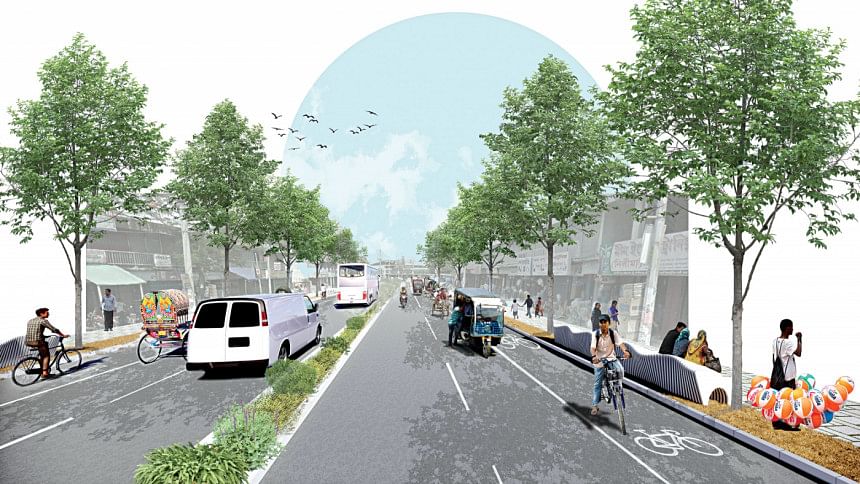
THE CITY OF THE FUTURE
In Bangladesh, the city of the future need not be futuristic. It's not necessary that cars will fly in the sky, buildings will build themselves, and polluted water will turn to honey. The future Bengali city only needs to address some of the things that are missing in making a quality city. I list here the ingredients of a Bengali urbanism:
First, Bangladesh's urbanism should be considered from a national scope. The lopsided centricity of Dhaka should be balanced by upgrading a number of cities/towns to metropolitan status. In a newspaper feature, we proposed the idea of a "distributed urbanism" in which 7-8 existing cities or towns can become "metro-cities" of five million population each, with each located in a balanced manner across the geography of the country.
Second, each city/town should be in concordance with its regional context. Even if designated by an administrative boundary, a city is not an isolated thing. It is an integral part of the flow and rhythm of a larger area—it is a particularity in what otherwise is a continuum. That continuum could be geographical, in how the city is embedded in the ebb and flow of a river or water basin. To address urban flooding, it is critical that we know the direction and volume of water flow, and its flux. An understanding of water basins should be the basis of urban planning in Bangladesh. We also know that every city is eventually connected to other cities and settlements in a network of flows and relationships.
Regional planning, which should be the basis of future developments of any city, should be based on an understanding of the network of various flows.
Third, as we enter the perimeter of the actual city, we will realise that there is no city or town in Bangladesh where a river does not run through it. Which is an indication that the river was historically and ecologically critical to the development of that town or city. The river not only provided essential waters, it also promoted the ecological value of wetlands, ponds and vegetal spaces. The present city, however, turns its back to the river, encroaches upon it, turning it into a cesspool. The riverbank which was a natural public space for all, once upon a time, is now a sordid landscape of factories, warehouses, and illegal constructions, from where the public has been banished. We need exemplary riverbanks which become lively public spaces and advance the cause of river ecology.
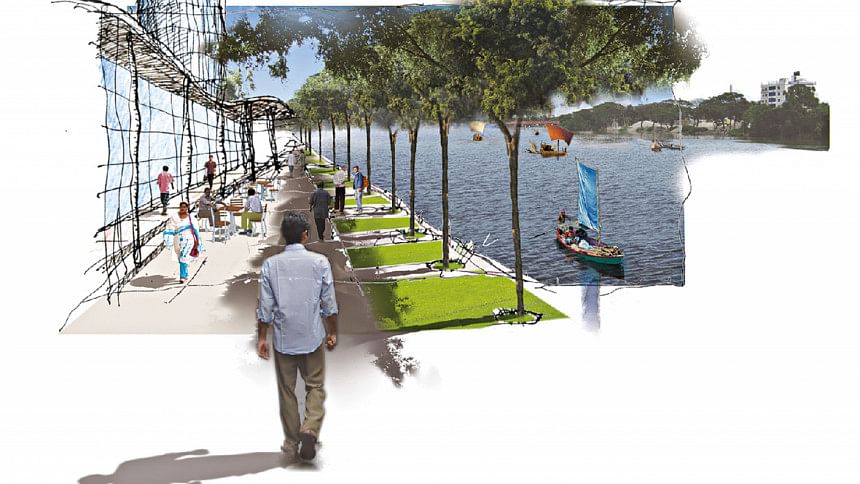
Developing the city as a network of public spaces is the fourth and critical topic. A developed quality of life in a city is not merely about its fancier buildings, but about the intricate relationships between buildings and open spaces. Such an experience includes the multiple corridors of movement, and different places of arrival and assembly. Maidans, parks, gardens, plazas, riverbanks, and lakefronts make up the ingredients of public spaces. All our cities can be gardens.
The fifth topic is housing, something I have written about repeatedly. There is a remarkable lack of housing in Bangladesh, and certainly Dhaka. There is of course a lack in numbers (a deficit of 8.5 million housing units in 2021), but a bigger lack is an understanding of what constitutes housing. A cluster of apartment buildings does not make housing, despite the claims by real-estate developers and even government agencies. But that is how swaths of areas in Dhaka and elsewhere are being planned. Plot-based planning and parcelling of land have been the greatest curse for Dhaka (something repeated in other towns). Such plans have failed to provide the social fabric and neighbourly cohesion dear to urbanism. On the other hand, the plans have only accelerated a ferocious sense of property ownership with primarily profit motive and land speculation in mind, making land in Dhaka one of the priciest on the planet. A consequence of that is that the poor and lower income groups are marginalised in the process. A humane and equitable Dhaka would mean the production of diverse dwelling units organised as a collective catering to the various economic groups of the city. The pursuit of proper housing as block or group housing is indicated in the 2022-2035 Detailed Area Plan for Dhaka.
Sixth, transit-oriented development (TOD) offers an opportunity for creating concentrated urban hubs or neighbourhoods. Considering the success of the metro rail transit (MRT) in Dhaka, TOD is a perfect opportunity for radically restructuring the city. As a strategy, mass transit can be adopted now even in smaller towns in the form of light rail transit (LRT). MRT or LRT is not only a transport artery, but an urban development strategy in which each station becomes a new hub of intense assembly and activities, and the transit line a development corridor. The DAP for Dhaka does mention a 200m and 500m diameter of influence zones around the stations, but what is required is a detailed plan of those encircled areas. I have suggested that in any future revision of DAP, a higher floor area ratio (FAR) be considered for areas around stations and along the artery. With taller mixed-use buildings around the stations, high density habitats will ease commuting time and create greater ridership.
Seventh, if we want to make mass transit successful, we need a walkability plan for the city. If 40 percent of the people walk as part of moving around the city, Dhaka needs a walkability infrastructure in which footpaths take centre-stage in the movement system. Every city and town need such a plan—walking in a safe and comfortable way is key to going about in the city. It is fundamental to creating a neighbourhood quality and humane city in which one has easy and comfortable access to key urban services. The idea of "15 Minute City," advanced by the mayor of Paris, is based on that.
Fifth, and finally, we need to imagine the fabric of a city as a synthesised outcome of the seven topics. The synthesis should take into account that all cities and towns do not look alike. With a development model based on Dhaka, all towns in Bangladesh are beginning to look alike. I recently visited Cumilla after many years. I was disheartened to see a beautiful town of "banks and tanks" with distinctive buildings and neighbourhoods now sporting the same 10-12 story apartment towers popping up randomly in the skyline. On the other hand, when we were developing an urbanscape plan for Sylhet city, we heard something inspiring from the citizens: Let's make Sylhet more Sylhet. There is still hope that we may arrive at our own urbanism.
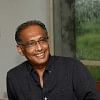
 For all latest news, follow The Daily Star's Google News channel.
For all latest news, follow The Daily Star's Google News channel. 


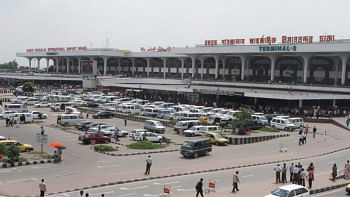
Comments